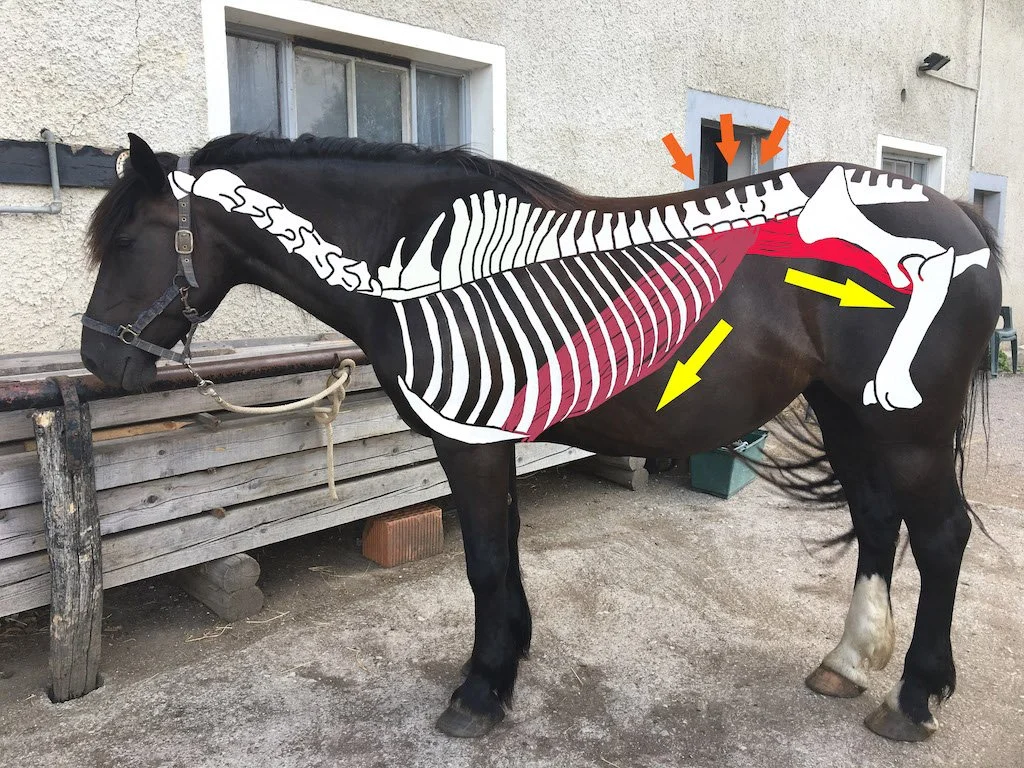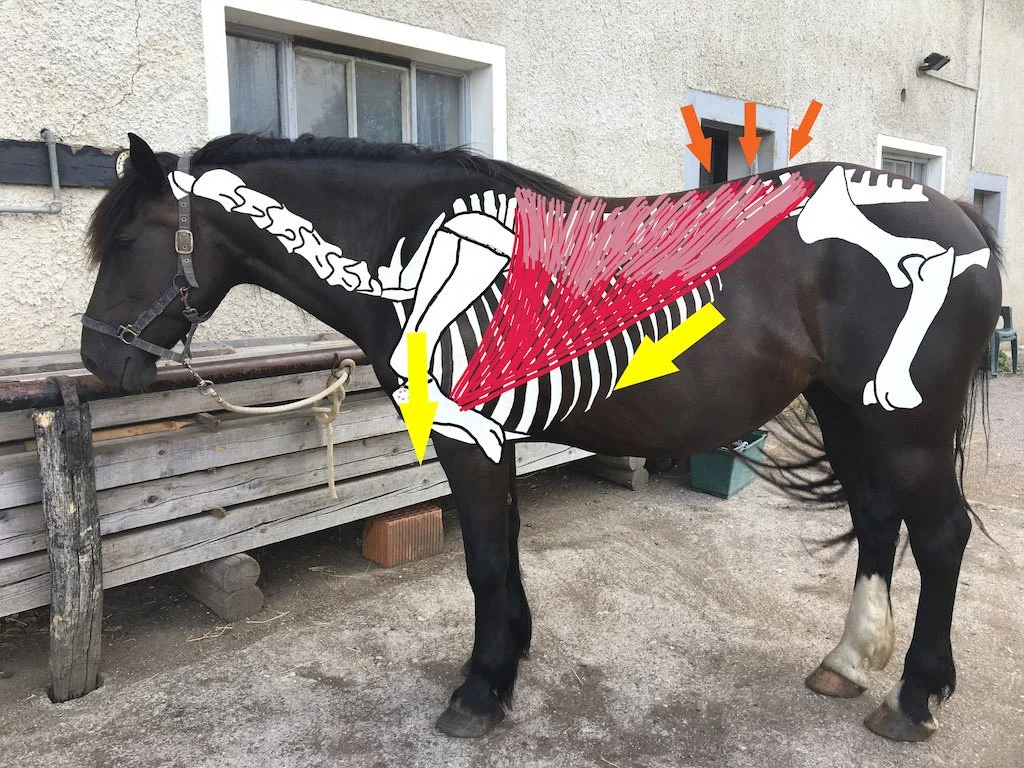What's the cause behind persistent back pain?
Back pain is very often a secondary issue. The cause most often lies somewhere else in the body.
The lumbar area is a particularly sensitive area of the horse and it is most often the spot that is sore when people say »my horse has back pain«. It makes sense that this area is particularly prone to pain, as this part of the back doesn't have the added support of the ribs that the thoracic part has. It also has a very difficult job of transferring forces from the hind end to the front.
Lumbar back pain is rarely an isolated event. Most often it is a consequence of dysfunction elsewhere, so whenever we are dealing with this issue, we need to ask why it happened in the first place. Here are some most common reasons for persistent lumbar back pain.
1.
Ventral line dysfunction. Pain in the lumbar area is often a consequence of tightness in the psoas and the diaphragm – two important muscles of the ventral line of the horse's body. Sometimes excess psoas tension can be so powerful, the horse actually starts to look like he has a roach back, which is where the lumbar vertebrae start to bulge upwards. This can also cause the pelvis to be stuck in flexion, which limits the range of motion through the back, stressing the lumbar area further.
Tightness in the psoas and the diaphragm causes the lumbar area to stiffen up and reduces range of motion in the pelvic area.
2.
A weak thoracic sling. While the thoracic sling might seem too far away from the lumbar area to have a direct effect on it, that is actually not the case. The thoracic sling area is connected to the lumbar area through the latissimus dorsi muscle and the thoracolumbar fascia. If the horse doesn't use the thoracic sling properly, his front end will sink downwards between the front legs, pulling the latissimus dorsi down with it. This will create a pull on the thoracolumbar fascia, limiting the range of motion of the lumbar area and the pelvis. Until the base of the neck is released and the horse learns how to use this part of his body correctly, the pain in the lumbar area will keep coming back.
When the front end sinks down between the front legs, it creates pull on the lumbar area, reducing its mobility.
3.
Liver, digestion or reproductive issues. The nerves innervating the internal organs leave the spinal cord in the lumbar area. This means that excess tightness in this area will have a negative impact on the viscera and the other way around. Dysfunction in the liver, the ovaries and the digestive tract can irritate the nerves, causing pain and tightness through this region of the back. If this is the case, we need to look at diet, stress levels and general health.
4.
Improper saddle fit or rider imbalance. Of course, back pain can be caused by a saddle that is too long or one that causes the horse to hollow his back during movement. The same goes for a rider that is not well balanced, causing the horse to compensate by tensing up.
5.
Unbalanced feet. How the hind feet function will have a huge effect on lumbar back function. Any imbalances of the hind feet will cause the horse to compensate by tensing up and reducing the range of motion in the pelvic area. This is especially true, if we are dealing with issues such as long toes and underrun heels or a negative plantar angle.
This is by no means an exhaustive list, but it's a good place to start when trying to get to the bottom of persistent back pain. It might take some time, but figuring out where the problem actually began will pay dividends in the long run.


